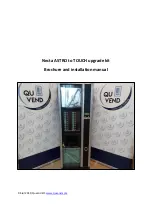Summary of Contents for Tipmatic 6110
Page 1: ...D C 1 C C C D 30 D C 0 og C 03 0 sfl NJ 0 C a 01 0 0 an 1 IT ...
Page 3: ...MrsJ OCD a owl ...
Page 47: ...PFAFF tiptron ic 6230 tipmatic 6110 6120 6150 PFAFF instruction manual ...
Page 55: ...2fl Z D DO V _ 0 Q E 0 CDE_ r 0 3 o a DD COO 0 3 00 0 0 D 43c LD oC 0 0 aoO C ci ci 0 D 00 ci ...
Page 87: ...L9 ...
Page 88: ...co ...



































